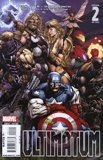After spending a few hours at the Chreng Chomres school, our journey continued for another 2 ½ hrs in land towards the Muslim Champa community at Kampong Chnang. The scenery along the route was mostly vistas of rice fields in various stages of maturity which reminded me of the trip that I took by train from Jakarta to Bandung earlier this year. The major difference between these two sights was that it was very much geographically flatter in Cambodia than in Indonesia which made the sea of green rice fields stretch all the way to the horizon. We also past through many houses built on stilts driven into the water canals that ran along side the road. Most have the doors open all the way through which gave me the opportuinity to glimpse through how the insides of their houses was like as our chartered van passed by.


(Views on the way to Kampong Chnang)
One common feature of these houses was a covered verandah in front of the house where hammocks were string up for us. Given the fairly high temperatures that afternoon, I assumed that these hammocks would be used as an outdoor sleeping area during the hot days as the household rested after morning chores in the fields. Having seen more than a few people dozing off in these hammocks, I’m fairly sure that my assumptions were not all that wrong.
Another roadside feature that made me stop to wonder was what seemed to be piles of rice stalks that punctuated our view of the rice fields. Standing at least 2 meters tall, I wondered what these piles of dried rice stalks were for. At first I thought that they just plied them by the side of the road after they harvested their rice but I soon observed that cows were actually eating them. It was only then it dawned to me that this was how the people on the area feed their cows. With the lack of grazing ground in the rice fields, cow owners were putting these piles of rice stalks for their cows to eat. Since the cows seem to be allowed to roam freely in the area, it seems that cow owners had to put their feed in more than one place. Having only had the experience of cows grazing on open grasslands, the sight of the rice stalk piles was definitely one of the more memorable sights of the trip especially when it took me a while to figure them out.


(Took me a while to figure out what these pile were for and why they were there along the road)
We stopped at a roadside rest/car wash area along the way and encountered a convoy of UN trucks being washed before they went on their way to Phnom Penh. We were told by our local guides that these trucks were from the UN contingent operating along the Cambodian borders. This drove home the point to me that not long ago, the country was not entirely stable. They still have UN presence in the country to help them with border issues as well as land mine clearing activities in some of interior areas. It was sobering to think that for all that has happened since then, the recovery of Cambodia was still a slow process.


(UN Trucks at the rest/car wash area)
After about an hour after our trip break, we finally arrived at Kampong Chnang which was surrounded by a sea of green rice fields. With the sunny skies above us, the sight was definitely something to behold albeit it being a really hot and sweaty place to be. As we drove on the only road leading to the village, our journey came to an abrupt end when we reached what seemed to be a water canal running across the dirt road. We would later be told that road had been washed away when the waters from the rice fields on both sides overflowed after the rains that came down previously. Since the water was nearly at above knee height at the deepest part of the road, we had to leave the van by the road side and find a way to continue on to the village.


(The wash out road leading to the village)

(Thanks to the villagers, we manage to get across and continue to the village)
A quick call by our local guide brought out a group of villagers with bicycles and motorcycles who met us at the washed out road. While some of us opted the very flimsy piece of fencing to cross the road, some of use took the more interesting way of getting ferried across the washed out road by motorcycle. As we took turns getting across the water obstacle, the area filled with our laughter as it was a fairly hilarious situation for us. It was definitely an experience that I would not have expected on this trip but actually thankful that it happened since it added just a little more spice to the experience. Some of the group decided to commandeer some of the children’s bicycles to ride into the village. The sight of them racing like kids to get to the village first was definitely quite memorable. Given that I can’t ride a bike even to save my life, I choose to walk the way while enjoying the views.




(Scenes from the surrounding rice fields of the village)
After a somewhat sweaty walk, I finally arrived at the village mosque where the villagers were already gathered to welcome us. We were promptly offered fresh young coconut juice to drink which definitely hit the spot on that hot afternoon. We were introduced to the village elders and thanks to our local guide who acted as translator, we learned a bit about how they lived in the area. We were also given the chance to hear how some of the Quran verses was read in the old Champa way which really sounded different than the way that it was meant to be read. We also got a sampling of a local version of the
qasidah which was accompanied by the beating of hand drums by the elders.




(Our hosts performing the qasidah for their visitors)
After the presentations by the villagers, the group distributed the clothes that they bought with them from Kuala Lumpur to the villagers. Most were for the children and women of the village as a token of our visit. The group also distributed some alms to the village children much to their excitement. Standing there watching them, it occurred to me that it doesn’t really take much to cheer someone up when they have very little to begin with and how fortunate we were relative to them. There is always the wish that there was something more that we could do for them but I believe that the best gift that we could give to them is to help enable them to better their livelihoods for their own future. It made me think of other ways of helping them other than just to be the bearers of gifts and money.


(Distributing alms to the children)
Our warm reception extended to an invitation to a simple lunch prepared by the villagers. We were ushered to a high stilted one room school building near the mosque for a meal of white rice and roasted chicken. The roasted chicken was accompanied by a thin sauce made out of local black pepper and lime juice that we were suppose to dip the chicken meat in. We only found that out later when we noticed that none of the locals were taking spoonfuls of the sauce and putting it on their rice like we did. In our defense, we all thought that the sauce was some kind of spicy soup that was suppose to go with the plain white rice. Our hosts were too polite to correct our culinary faux pas especially seeing how enthusiastic we were tucking into the food and instead sent us more of the sauce. I’m sure that they were wondering why we were putting the dipping sauce in our rice which incidentally was so good for me that I didn’t even take any chicken after the first serving.

(Simple but highly satisfying meal)
Our bellies full and refreshed with the dessert of the flesh of the young coconut, it was time for us to thank our host for their generous hospitality and make our way back to Phnom Penh. As before, we were ferried over the washed out road to where our charted van was parked by the villagers who saw us off. As we left the village traveling towards Phnom Penh, I thought back on the experience and marked it up as something that I might not have been able to experience in a normal tour of the country. The opportunity to experience the hospitality of the villagers at Kampong Chnang would definitely be one of the highlights of this trip for me.










































































